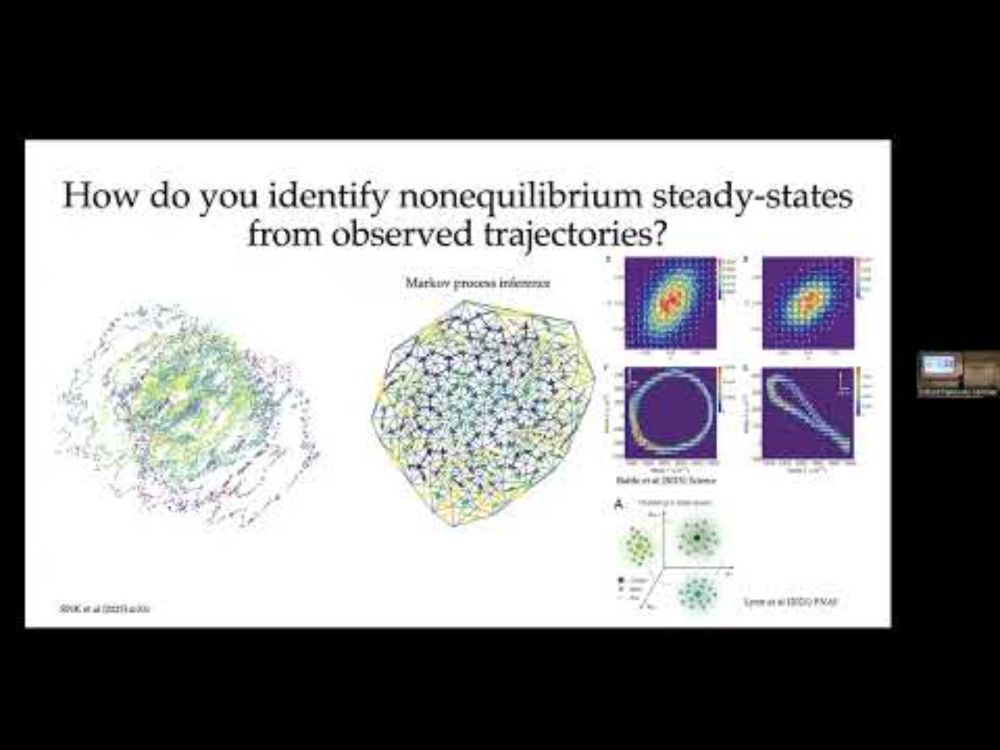
New interdisciplinary math+bio paper! Mouse liver assembloids model periportal architecture and biliary fibrosis. In vitro assembloids modelling the mouse liver periportal region were built to study processes causing scarring (cholestatic injury/biliary fibrosis) and the shape change this causes.
04.06.2025 12:58 — 👍 6 🔁 2 💬 1 📌 1
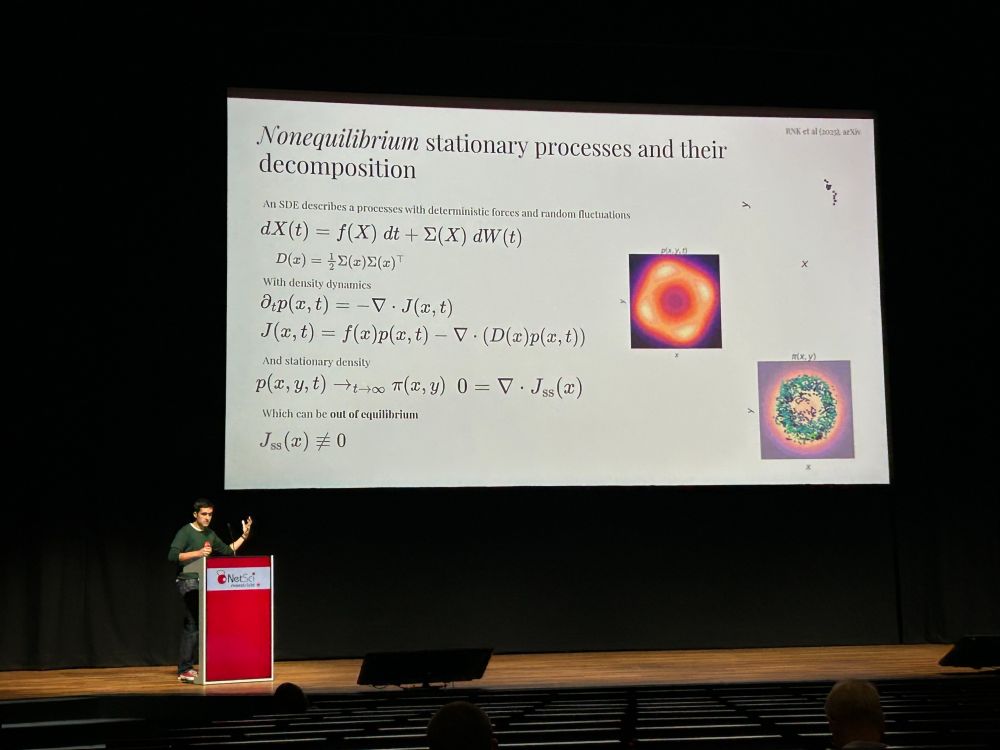
Speaking at NetSci2025 about our recent Learning on Graphs paper.
We build up a theoretical and applied approach to use Hodge theory on graphs to study stochastic systems!
arxiv.org/pdf/2409.07479
#NetSci2025
04.06.2025 14:58 — 👍 5 🔁 1 💬 0 📌 0
Whether the converse of the above tweet is true, we know not. Finally, were able to tell a similar story about local identifiability of Čech persistence, except it involves hypergraphs instead of graphs, and a rigidity theory that is, to our knowledge, new.
10/10
27.05.2025 16:42 — 👍 1 🔁 0 💬 0 📌 0

Using a modern rigidity theory result of Gortler, Theran, and Thurston, we also proved that if G is globally rigid, then P is identifiable. G being globally rigid means you cannot teleport points in P without preserving edge lengths in G, unless you teleport via isometry.
9/10
27.05.2025 16:42 — 👍 1 🔁 0 💬 1 📌 0
As it turns out, it is difficult to figure out when a graph is rigid in general- indeed rigidity theory is an active subject in real algebraic geometry. This suggests that it is hard to figure out which point clouds are locally identifiable.
8/10
27.05.2025 16:42 — 👍 1 🔁 0 💬 1 📌 0
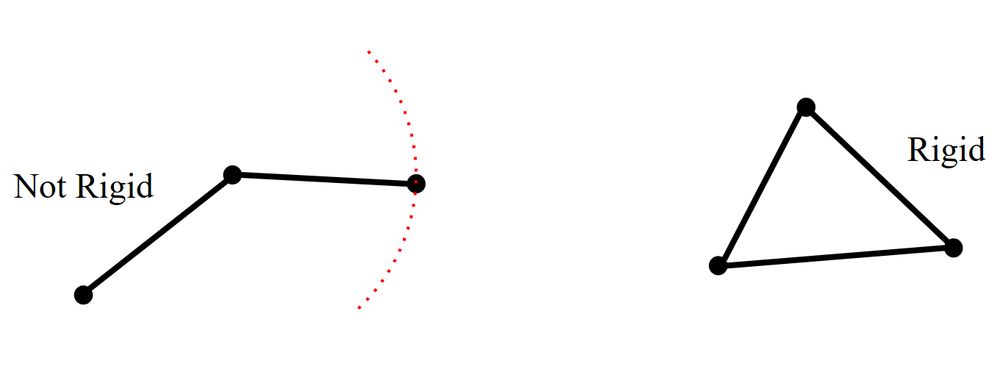
G being rigid means we can't wiggle the points in P without changing the edge lengths of G, unless we wiggle the points in P via isometry.
7/10
27.05.2025 16:42 — 👍 0 🔁 0 💬 1 📌 0
Here is how to find out if P is locally identifiable (under Vietoris-Rips PH). Make a graph G with vertex set P and any edge whose inclusion in the V-R filtration coincides with a change in topology. Any generic P is locally identifiable exactly when G is rigid.
6/10
27.05.2025 16:42 — 👍 1 🔁 0 💬 1 📌 0
Its natural to ask which point clouds are best described by PH. These are the point clouds P such that if Q has the same PH, then P and Q are isometric. Such a P is called identifiable. If P is isometric to any NEARBY Q with the same PH then P is called LOCALLY identifiable
5/10
27.05.2025 16:42 — 👍 1 🔁 0 💬 1 📌 0
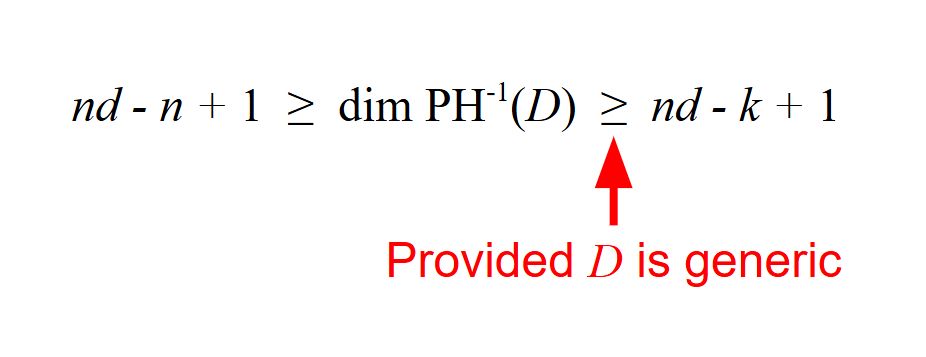
We can quantify how big a level set is by computing its dimension. If D is a family of barcodes (one for each homological degree) with k distinct endpoint values, we showed the following inequalities hold (see picture)
4/10
27.05.2025 16:42 — 👍 1 🔁 0 💬 1 📌 0
What we are interested in this paper is how descriptive this mapping is. One way to ask this is to ask how big the level sets are. Big level sets mean many point clouds have the same barcodes, so PH is not very descriptive at barcodes with big level sets.
3/10
27.05.2025 16:42 — 👍 1 🔁 0 💬 1 📌 0
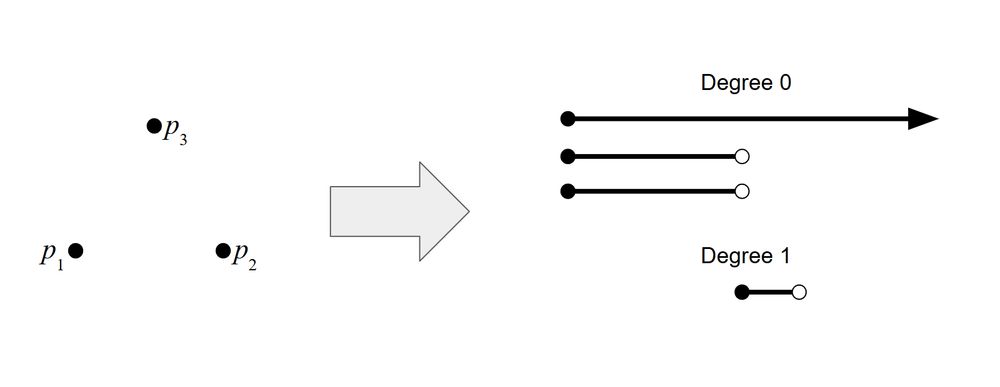
As many of my faithful followers will be aware, using either Čech or Vietoris-Rips persistent homology (PH) we get a barcode in each homological degree from any point cloud. So we have a mapping PH:
Point clouds with n points in d dimensions
->
Barcodes
2/10
27.05.2025 16:42 — 👍 1 🔁 0 💬 1 📌 0
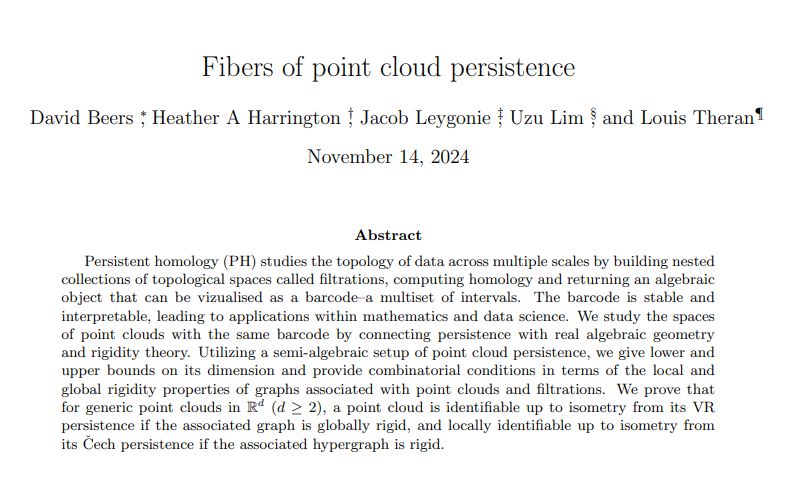
I posted about this paper this a while ago on another website, but figured I'd post it here now that I have a few followers. (Joint with @haharrington.bsky.social, Jacob Leygonie, @uzulim.bsky.social, and Louis Theran).
arxiv.org/abs/2411.08201
1/10
27.05.2025 16:42 — 👍 8 🔁 4 💬 1 📌 0
YouTube video by Fresh from the ArXiv
Ramon Nartallo-Kaluarachchi: Non-equilibrium steady-states, from diffusion to digraphs
Last week, I gave the Networks seminar here at Oxford on:
'Nonequilibrium steady-states: from diffusion to digraphs',
talking about some of my recent work on discrete approximations of nonequilibrium diffusions. It is available online:
www.youtube.com/watch?v=ezep...
:)
15.05.2025 08:36 — 👍 5 🔁 2 💬 0 📌 0
I’m smooth (operator)
DPhil student with Heather Harrington and Helen Byrne at MPI-CBG and University of Oxford
Mathematician studying topology in biomedical data | Project leader of the Topological Learning in the Life Sciences group, Max Planck Institute of Biochemistry | Previously at EPFL & Oxford Maths | 2022 L’Oréal-Unesco #ForWomenInScience Fellow
Mathematicians developing mathematics and methods to look at living systems differently.
Colocated at @mpi-cbg.de and @csbdresden.bsky.social in Dresden, Germany.
Postdoctoral Associate at Vermont Complex Systems Institute, University of Vermont. Generally interested in studying dynamics on networks.
https://www.leahkeating.ie/
PhD student in topological data analysis @ qmulmaths.bsky.social
aonus0.wixsite.com/website
They/she 🏳️🌈🏳️⚧️
PhD student at @oxfordmathematics.bsky.social, interested in spatial biology and TDA.
https://www.sergio-sdhi.com
Applied topology PhD student @ Oxford Maths
https://people.maths.ox.ac.uk/benjamin/
🍩 Postdoc at Queen Mary, working on Geometric Data Analysis
🎓 Formerly at Oxford and Postech
🏳️⚧️ Trans non-binary, Any pronouns :)
✨ Also: number theory, physics, art, music
https://sites.google.com/view/uzulim/main
Currently interning at IBM Research.
Doctoral student in applied mathematics at the University of Oxford. Interested in complex systems, dynamics, networks and neuroscience.
https://www.rnartallo.co.uk/
Postdoc at UCLA studying topological data analysis, dynamical systems, opinion dynamics, and network science. She/her.
she/her
math group leader at @mpi-cbg.de and the Center for Systems Biology Dresden, Young Investigator at the Department of Mathematics @tudresden.bsky.social
Postdoc at @mpi-cbg.de and @csbdresden.bsky.social
Interested in algebra, geometry and applications to lIfe Sciences
Associate Professor of Math and Statistics at UAlbany
Applied mathematician & Group Leader
@mpipz.bsky.social
Mathematician and neuroscientist working on Alzheimer’s disease
Currently at Lund University, previously at Ox Maths
Mathematician interested in data & biology. Max Planck Institute & TU Dresden. Oxford Maths Institute & St John’s College, Oxford. Previously Imperial College London & Umass Amherst.
Professor of Mathematical Modelling at Oxford University
and Gresham Professor of Geometry at Gresham College, London







